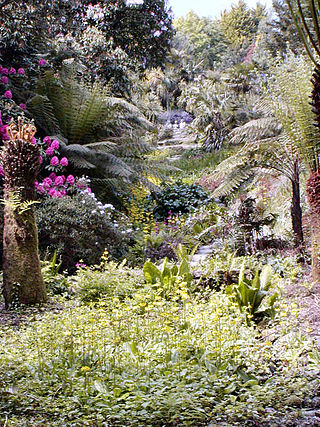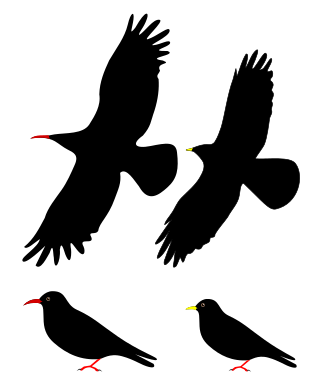
The earless seals, phocids, or true seals are one of the three main groups of mammals within the seal lineage, Pinnipedia. All true seals are members of the family Phocidae. They are sometimes called crawling seals to distinguish them from the fur seals and sea lions of the family Otariidae. Seals live in the oceans of both hemispheres and, with the exception of the more tropical monk seals, are mostly confined to polar, subpolar, and temperate climates. The Baikal seal is the only species of exclusively freshwater seal.

Sea lions are pinnipeds characterized by external ear flaps, long foreflippers, the ability to walk on all fours, short and thick hair, and a big chest and belly. Together with the fur seals, they make up the family Otariidae, eared seals. The sea lions have six extant and one extinct species in five genera. Their range extends from the subarctic to tropical waters of the global ocean in both the Northern and Southern Hemispheres, with the notable exception of the northern Atlantic Ocean. They have an average lifespan of 20–30 years. A male California sea lion weighs on average about 300 kg (660 lb) and is about 2.4 m (8 ft) long, while the female sea lion weighs 100 kg (220 lb) and is 1.8 m (6 ft) long. The largest sea lions are Steller's sea lions, which can weigh 1,000 kg (2,200 lb) and grow to a length of 3.0 m (10 ft). Sea lions consume large quantities of food at a time and are known to eat about 5–8% of their body weight at a single feeding. Sea lions can move around 16 knots in water and at their fastest they can reach a speed of about 30 knots. Three species, the Australian sea lion, the Galápagos sea lion and the New Zealand sea lion, are listed as endangered.

Pinnipeds, commonly known as seals, are a widely distributed and diverse clade of carnivorous, fin-footed, semiaquatic, mostly marine mammals. They comprise the extant families Odobenidae, Otariidae, and Phocidae, with 34 extant species and more than 50 extinct species described from fossils. While seals were historically thought to have descended from two ancestral lines, molecular evidence supports them as a monophyletic lineage. Pinnipeds belong to the suborder Caniformia of the order Carnivora; their closest living relatives are musteloids, having diverged about 50 million years ago.

The Galápagos fur seal is one of eight seals in the genus Arctocephalus. It is the smallest of all eared seals. It is endemic to the Galápagos Islands in the eastern Pacific. The total estimated population as of 1970 was said to be about 30,000, although the population has been said to be on the decline since the 1980s due to environmental factors such as pollution, disease, invasive species, and their limited territory. Due to the population having been historically vulnerable to hunting, the Galápagos fur seal has been protected by the Ecuadorian government since 1934

Arctocephalus forsteri is a species of fur seal found mainly around southern Australia and New Zealand. The name New Zealand fur seal is used by English speakers in New Zealand; kekeno is used in the Māori language. As of 2014, the common name long-nosed fur seal has been proposed for the population of seals inhabiting Australia.

Gweek is a civil parish and village in Cornwall, England, United Kingdom. It is situated approximately three miles (5 km) east of Helston. The civil parish was created from part of the parish of Constantine by boundary revision in 1986. The name Gweek is first recorded as Gwyk in 1358 and is derived from the Cornish word gwig, meaning "forest village", cognate with the Welsh gwig and Old Breton guic. Gweek village has a pub, the Black Swan, and a combined shop and post office. The village is also home to the Cornish Seal Sanctuary.

The Vancouver Aquarium is a public aquarium located in Stanley Park in Vancouver, British Columbia, Canada. In addition to being a major tourist attraction for Vancouver, the aquarium is a centre for marine research, ocean literacy education, climate activism, conservation and marine animal rehabilitation.

The New England Aquarium is a nonprofit organization located in Boston, Massachusetts. The species exhibited include harbor and northern fur seals, California sea lions, African and southern rockhopper penguins, giant Pacific octopuses, weedy seadragons, and thousands of saltwater and freshwater fishes. In addition to the main aquarium building, attractions at Central Wharf include the Simons Theatre and the New England Aquarium Whale Watch. More than 1.3 million guests visited the aquarium each year prior to the outbreak of the COVID-19 pandemic.

Natureland Seal Sanctuary, also referred to as Skegness Natureland or Skegness Seal Sanctuary is an animal attraction in Skegness, Lincolnshire, England.

The Helford River is a ria in Cornwall, England, fed by small streams into its many creeks. There are seven creeks on the Helford; from west to east these are Ponsontuel Creek, Mawgan Creek, Polpenwith Creek, Polwheveral Creek, Frenchman's Creek, Port Navas Creek, and Gillan Creek. The best known of these is Frenchman's Creek, made famous by Daphne du Maurier in her novel of the same name. A little further up river is Tremayne Quay, built for a visit by Queen Victoria in the 1840s which she then declined to make, allegedly because it was raining.

The Alaska SeaLife Center is a public aquarium and Alaska's only permanent marine mammal rehabilitation facility. It is located on the shores of Resurrection Bay in Seward. It opened in May of 1998, and is dedicated to understanding and maintaining the integrity of the marine ecosystem of Alaska through research, rehabilitation, conservation, and public education. It is the only facility in the world specifically dedicated to studying the northern marine environment and the only one designed at the outset to combine research with public education and visitor components. The Alaska SeaLife Center generates and shares scientific knowledge to promote understanding and stewardship of Alaska's marine ecosystems.

The Marine Mammal Center (TMMC) is a private, non-profit U.S. organization that was established in 1975 for the purpose of rescuing, rehabilitating and releasing marine mammals who are injured, ill or abandoned. It was founded in Sausalito, California, by Lloyd Smalley, Pat Arrigoni and Paul Maxwell. Since 1975, TMMC has rescued over 24,000 marine mammals. It also serves as a center for environmental research and education regarding marine mammals, namely cetaceans, pinnipeds, otters and sirenians. Marine mammal abandonment refers to maternal separation; pups that have been separated from their mother before weaning. At the center, they receive specialized veterinary care: they are diagnosed, treated, rehabilitated and ideally, released back into the wild. Animals in need of assistance are usually identified by a member of the public who has contacted the center. These animals represent the following major species: California sea lions, northern elephant seals, Pacific harbor seals, northern fur seals, Guadalupe fur seals, Hawaiian monk seals, and southern sea otters. On a few occasions, TMMC has taken in Steller sea lions and bottlenose/Pacific white-sided dolphins. The only non-mammals that TMMC takes in are sea turtles.

Blank Park Zoo is a 49-acre zoological park on the south side of Des Moines, Iowa, United States, near historic Fort Des Moines. The zoo is a member of the Association of Zoos and Aquariums (AZA), and is the only accredited zoo in Iowa.

Cornwall is the county that forms the tip of the southwestern peninsula of England; this area has a mild and warm climate regulated by the Gulf Stream. The mild climate allows rich plant cover, such as palm trees in the far south and west of the county and in the Isles of Scilly, due to sub-tropical conditions in the summer.

Sea otter conservation began in the early 20th century, when the sea otter was nearly extinct due to large-scale commercial hunting. The sea otter was once abundant in a wide arc across the North Pacific ocean, from northern Japan to Alaska to Mexico. By 1911, hunting for the animal's luxurious fur had reduced the sea otter population to fewer than 2000 individuals in the most remote and inaccessible parts of its range. The IUCN lists the sea otter as an endangered species. Threats to sea otters include oil spills, and a major spill can rapidly kill thousands of the animals.

The birds of Cornwall are in general a selection of those found in the whole of the British Isles, though Cornwall's position at the extreme south-west of Great Britain results in many occasional migrants. The nightingale is one English bird which is virtually absent from Cornwall.

The harborseal, also known as the common seal, is a true seal found along temperate and Arctic marine coastlines of the Northern Hemisphere. The most widely distributed species of pinniped, they are found in coastal waters of the northern Atlantic and Pacific oceans, Baltic and North seas.

Sea Life Park Hawaii is a marine mammal park, bird sanctuary and aquarium in Waimānalo near Makapuʻu Point, north of Hanauma Bay on the island of Oahu in Hawaii, United States. The park first opened in 1964, and includes exhibits that let visitors interact with the animals by swimming with dolphins, sea lions, and rays, taking a sea safari in the aquarium, and feeding the sea turtles. The park was acquired in 2008 and is operated by Palace Entertainment, the U.S. subsidiary of Parques Reunidos from Dolphin Discovery, which had acquired it in 2005.
SEA LIFE Charlotte-Concord is an interactive aquarium located at Concord Mills in Concord, North Carolina, a suburb of Charlotte. The aquarium contains thousands of aquatic creatures, plus an interactive touch pool and an 180° ocean tunnel. SEA LIFE Charlotte-Concord is owned and operated by Merlin Entertainments.




















